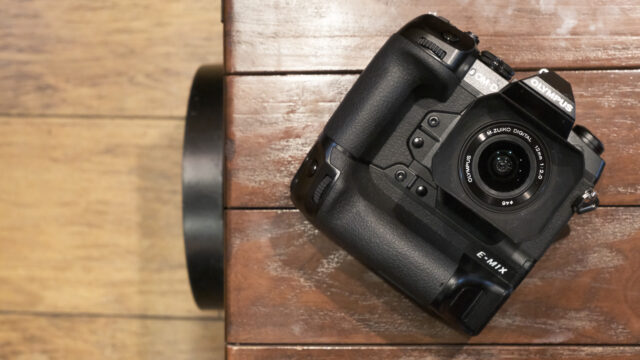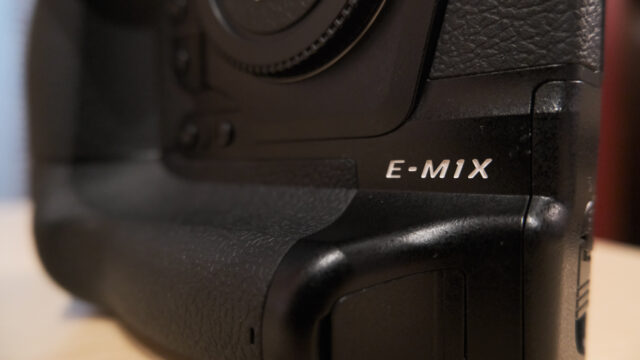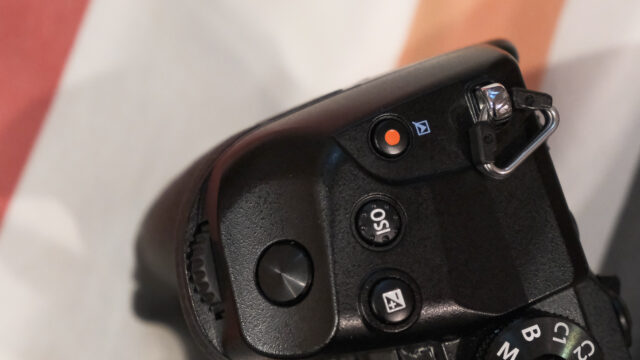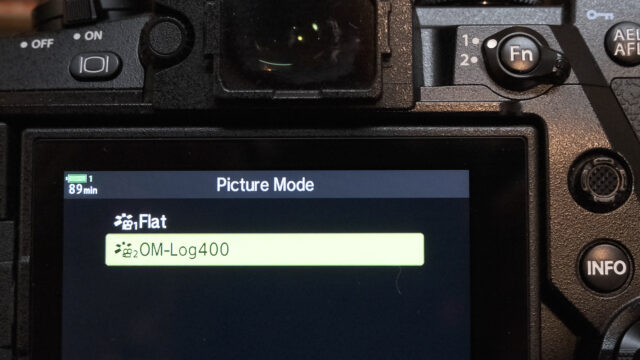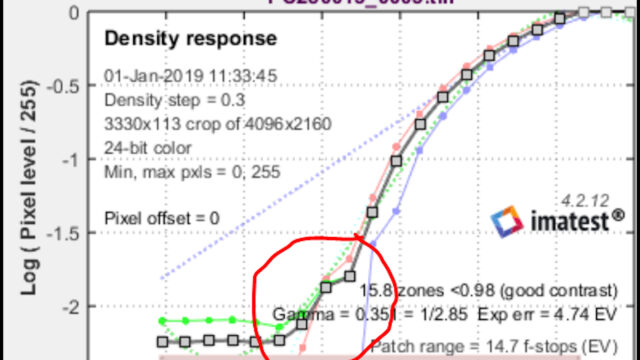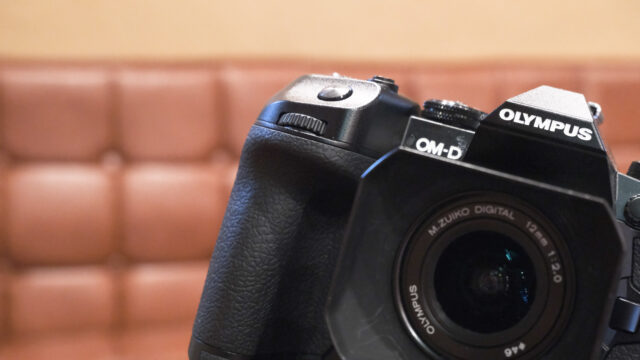OLYMPUS OM-D E-M1X Announced – First Impressions and Hands-On Review
Music Courtesy of MusicVine.com Get 20% off with code C5D20
The OLYMPUS OM-D E-M1X was just announced and we were lucky enough to get our hands on the camera well before the announcement. We filmed with it, tested it, and are now happy to share our thoughts about its video capabilities and overall performance. (All information is related only to the video functionality of the camera).
Two years and a bit after their last major announcement, OLYMPUS can pride themselves with having a new camera – the E-M1X. As you can see, I’m very careful about NOT calling it the new “flagship” camera, as both, the OM-D E-M Mark II and the new OM-D E-M1X will co-exist in OLYMPUS’ portfolio, allowing them to target a wider variety of users with different photo/filming needs and budgets.
OLYMPUS OM-D E-M1X – Overview
Unlike Panasonic, who are chartering new (Full Frame) fields, OLYMPUS seems to concentrate on supporting their joint Micro 4/3 camera system. I’m not indicating that Panasonic is about to desert that camera format, but as a matter fact, they are now introducing the new S1R and S1 Full Frame cameras. It is yet to be seen how this is going to affect the development of their GH, Micro 4/3 camera line, but naturally, their resources are now being invested in an alternative direction. When talking to OLYMPUS, it is clear that their main focus/concept hasn’t been changed. Freedom to shoot and mobility are still the essence of the Micro 4/3 system and this is why I was so surprised when I first saw the new E-M1X. Unlike what one would expect, when looking at some of the previously leaked images, the camera is simply big! In my opinion, the advantage of the MFT format has vanished. The “Pro Look” takes its toll and maybe the biggest disadvantage (besides the added camera wight and size) is that you can’t be ignored. You will always be (suspiciously) seen as a “pro”. Maybe for some it is an advantage, but for me personally, it is not. I’m traveling a whole lot and “low key” filming is the essence of my work. The size of a camera and how it’s being perceived by customers (our customers, while in the process of working) is an entirely different subject to write about, but I’m fully aware that many filmmakers do have concerns about appearance, as they are being asked to appear on set with “professional looking” equipment. When it comes to myself, I like the freedom of being able to add a hand grip, rig, matte box and such when needed, but with this new camera, the built-in grip leaves me with no other option than looking like a “pro”.
This grip accommodates 2 OLYMPUS batteries (the same that can be found in the OM-D E-M Mark II). The difference is that the camera comes equipped with 2 batteries and the grip itself will act as a charger. In fact, it will charge both batteries simultaneously and not one after another. On top, a relatively short charging time will bring enough juice to continue shooting that missing last take, so there is no need to wait for hours until they’re charged. I got around 70-80 minutes of continuous shooting from each battery and I like the idea of not needing a truck loaded with batteries…
Was OLYMPUS Thinking About Us Filmmakers When Developing This Camera?
The clear answer is YES and NO…
Yes – because of of the following:
- The IBIS (In Body Stabilisation System) has been updated with the idea of improving the already unique, existing stabilisation system
- The autofocus system functionality has been enhanced in order to become faster and more reliable
- The much requested OM-LOG picture profile has finally been added (ISO400 native)
- The built-in camera “View Assist” gives a BT.709 standardised color space and not just a random “added color” when monitoring the OM-LOG picture profile
- An improved audio circuity for lower noise floor as been implemented (High Res. 96 kHz recording is now possible)
- Even routing the REC function from the not-so-convenient dedicated REC button is possible. One can assign it to the camera shutter release button for better functionality
Many other new features were added, like the improved sensor Dust Reduction system (Lowering the risk of ruining a shot due to dust on the sensor), new heat dissipation structure (and indeed, I have’t encountered any overheating issues, but as always, more feedback from users is needed), USB Power Delivery allows the camera to be charged with an external battery, if needed. And last but not least, this camera can take a high level of “production strain”, as it is shock-, weather- and freeze-proof.
It is also worth mentioning that OLYMPUS have kept some of the features already found in the E-M Mark II, like the swivelled LCD screen, 4K DCI (unfortunately in 24p only), and up to 237 Mbps, All Intra video recording.
No – because of of the following:
- It is 2019 and we have learned to expect more, especially from companies that have no higher video market to protect and sadly, OLYMPUS chose to deliver a camera that records 8bit 4:2:0 internally AND when recording to an external device!
This is such a pity, as the absence of higher recording bit depth and color sampling will surely hurt camera sales and drive away potential new customers.
Also, the camera’s price is just shy of €3000. When looking at what competitors have to offer and at what price range, it is hard to to see how this device will become a primary working tool for many. (I honestly hope to be wrong here!)
I can only hope that this new camera has so much to offer for photographers that the price will be considered as perfectly adequate by them.
In the Field – In Body Stabilisation System (IBIS)
As a documentary filmmaker, the newly designed 5 axis stabilisation system ignited my imagination. I can’t even tell you how much I don’t like using gimbals during documentary work. Besides consuming extra set-up time and adding additional weight, a gimbal simply takes away some of the picture aesthetic and overall “feeling”, when everything suddenly becomes “too smooth”. (In other production scenarios, gimbals surely do have a place…) Anyways, I was hoping to have a camera that allows me to shoot stable handheld footage (also when using tele lenses) and on top, have the freedom to freely move and achieve nice looking, “on the go” shots. OLYMPUS fulfilled my wish just barely. While executing handheld static shots in up to 200mm is a breeze (sorry, no other longer focal length lenses to test), the new system heavily struggles when shooting while moving. When using the 12mm side of the (fabulous) M.ZUIKO DIGITAL ED 12-100mm F4.0 IS PRO lens (or my favourite, M.Zuiko Digital ED 12mm f/2 Lens), one risks getting very noticeable, wobbly images on both sides of the frame! This phenomenon can be partly avoided when shooting from a 15mm (approximately) and higher focal length.
OLYMPUS is now aware of the issue and I hope it can somehow be solved with a firmware update.
Autofocus
OLYMPUS have worked hard in order to improve their autofocus system and all in all it shows, as it is very easy to track action/faces in most lighting conditions. I encountered issues with focus consistency only when shooting high or very low contrasty objects. Anything in the middle worked well. It is worth noting that “dragging focus” between objects on the LCD screen is also possible and the addition of a knob/nipple at the back of the camera is a very welcomed thing! Placing the focus where you want it to be can now be done with a move of a thumb. Very easy.
OM-LOG Picture Profile and the Supplied new Log to BT.709.cube File
(The observations in this section are based on a Pre-production camera and early .cube file)
What should I bring first, the good or the bad news…? The idea behind such a profile is to bring the most latitude to the image. While we were very happy to see OLYMPUS incorporating it, in our opinion, there is something wrong with the way it is being implemented. The curve is so strange that when using our software and method to evaluate it (DSC Xyla 21chart/IMATEST), we could actually not measure it, as the distribution of code values to represent the luminance is not smooth. I hope that the above photo can visually explain our issue. Please take a look at the place circled in red color. This type of “jump” should not be there, so for now, as we are not able to get meaningful results, we cannot come up with an appropriate Dynamic Range test.
Despite of the above information, I filmed in the new OM-Log400 picture profile and imported the footage into Premiere, in order to color correct it. My first step was to see what I get, when using the new OLYMPUS Log_to_BT.709.cube file. So I tried to import it, but to my disappointment, all I got was an “Unable to Load Selected File” error message. A closer look at the cube file revealed a header line that technically does not need to be there and when removed, it allowed me to load the cube file successfully. Please note that according to OLYMPUS, this cube file was designed to work well in DaVinci Resolve, and we were just notified by OLYMPUS that they will not leave users of other popular editing platforms in the dark. Oh, and although not difficult to adjust at all, I suggest waiting for OLYMPUS to come up with an officially working Adobe Premiere cube file.
Picture Quality
When it comes to picture quality, I have yet to determine if I like what I see or not… On one hand, when shooting in 4K DCI, the picture is very solid and detailed, but on the other hand, it tends to be too detailed (sharp). Unlike with other camera manufacturers, when shooting LOG with this new camera, one cannot change any values like sharpness, for example. This is my preferred way, as the manufacturer should know what values make their own LOG picture profile work best, but in this specific case, I wish there was a way to tune sharpness down. I couldn’t find a way to do so and I hope that the camera is not enhancing the picture in a digital way.
New to the OM-D E-M1X is the ability to shoot in High Frame Rate (120fps in Full HD). I tend to avoid this option, as the results are just fine. Also, the crop factor when shooting in this mode is rather severe, but at least the autofocus function is working.
As a side note: unfortunately, the new camera does not support shooting in 4K/60p mode. When it comes to Rolling Shutter, like with the E-M1 Mark II, it is well controlled. (Not surprising, considering the fact that both cameras are using the exact same sensor and processor behind it. The only difference is the addition of a second processor in the new camera).
When it comes to lowlight performance, it is just fine. OLYMPUS never declared this camera to be a lowlight monster and as such, in my opinion, you can get acceptable results up to ISO 3200. Shoot above it and you risk getting a noisy video. One thing I noticed is the EVF turning “greenish” when shooting in lowlight. I have no clue why this is happening (it may happen only in my pre-production camera), but it is evident enough to report and share.
Things to Note
- I deliberately did not touch the subject of camera menu. What started out as a very difficult way of navigating, became better over time for me (obviously). But while it looked as if OLYMPUS genuinely attempted to cater our filmmakers’ needs by greying out photography related menu items, at some occasions I was left a bit lost…
For example, if you are looking to engage the LOG picture profile, you will need to activate this mode as On at a different menu page first (Video Menu – Specification Settings – Picture Mode – On) and then go to: Shooting Menu 1- Picture Mode – OM-Log400. Another example would be the absence of a way to retrieve the “View Assist” function fast. I could not find a way to assign it to any button and ended up adding it to “My Menu”. This is an “OK solution”, as it requires quite a few button clicks in order to get there.
- OLYMPUS have kept their older “Flat picture profile” mode, so people working with both, the new camera and the E-M1 Mark II, could match it.
- The red record indicator will appear on the bottom right hand-side. Even today – after spending some time with the camera – it is still hard for me to locate and notice it. I wish it would appeared on the upper right hand-side instead.
- Be aware of NOT buying the Lexar 128GB SD cards (2000x). There is a long, documented history of incompatibility between these card and OLYMPUS cameras, and they simply won’t be recognised by the camera. Regardless of “whose fault it is” (Lexar or OLYMPUS), after dealing with Lexar’s online customer service I decided to never buy their cards again!
- At times, when traveling, I’m using one of the new MacBook laptops for editing. As you know, there is no SD card slot on those new laptops, so I do appreciate the fact that when connected, the new E-M1X will appear on the computer as a drive, meaning copying and pasting the material is not so difficult.
- If you’re like me, as in more of an EVF user (over the LCD), then here is a thing that might drive you crazy: There is no way to start watching a clip on the LCD and then continue to look at it on the EVF, as the camera will immediately go to record standby mode. So you’ve started watching the clip on the EVF and moved your eye a little bit too far, and the playback function will automatically stop and the camera will return to REC standby mode. Why? No clue.
- Automatic audio level adjustment cannot be done by the camera. It is always on manual mode, yet the good news is that audio can be adjusted while recording on the fly. (Speaking of which, not all functions can be changed while recording, not even ISO when needed.)
- Changing aperture when using the new camera with an OLMPUS lens is something to note on the positive side – somehow the action is very smooth and graduated. Dare I say almost unnoticeable?
- I’ve already mentioned the EVF and “View Assist” earlier in this article, but it is important to me to emphasise that the quality of the EVF, when shooting in normal lighting conditions (inside or out), is nice and manual focusing is a breeze.
Conclusion
The new OLYMPUS OM-D E-M1X is a mixed bag camera. It has the potential to take handheld filming to a different level, but this can ONLY be done if the newly developed IBIS is fine-tuned. Although it feels as if OLYMPUS had us, the filmmakers, in mind when designing the camera, it is rather evident that they didn’t take the extra step in order to be on the same line with other camera manufacturers. When it comes to core technical specifications, they are a bit behind. As noted in this article, the price of this camera is somehow problematic (from a video performance perspective), especially when taking into account what others are currently offering for the same amount or even LESS money.
What do you think – can this new OLYMPUS camera be the one for you? Please share with us your thoughts in the comment section below.

